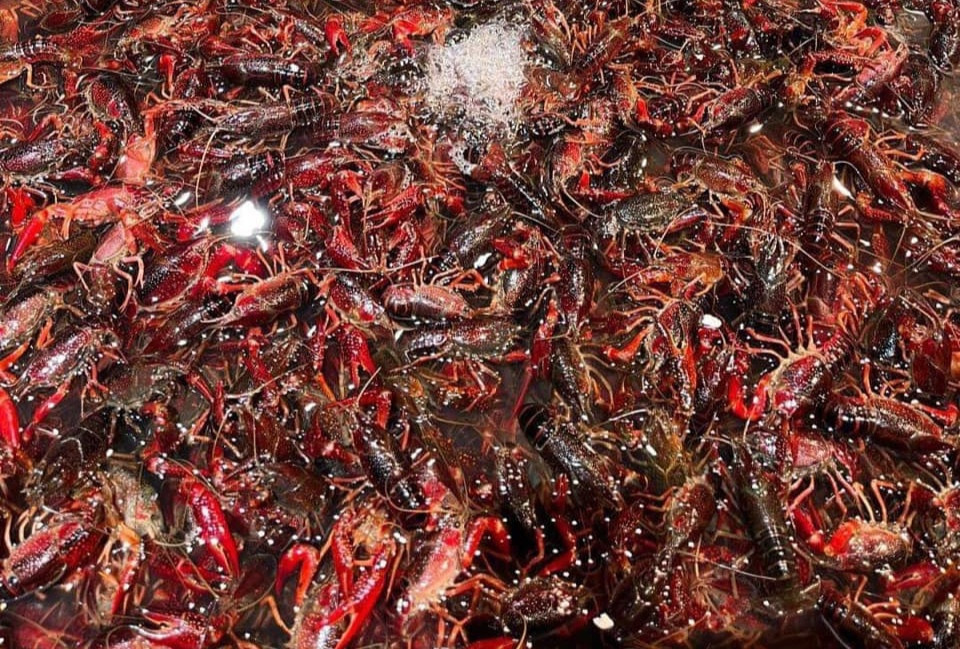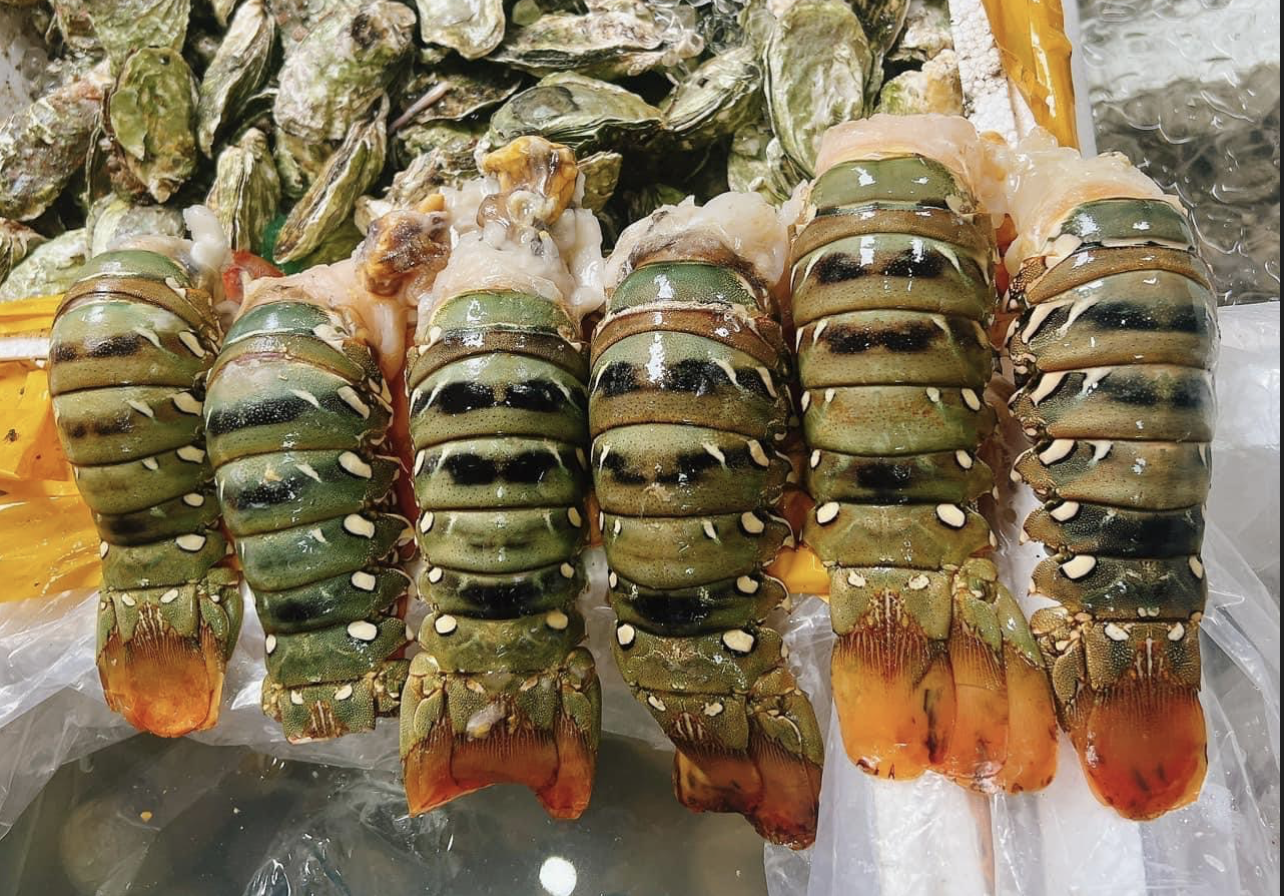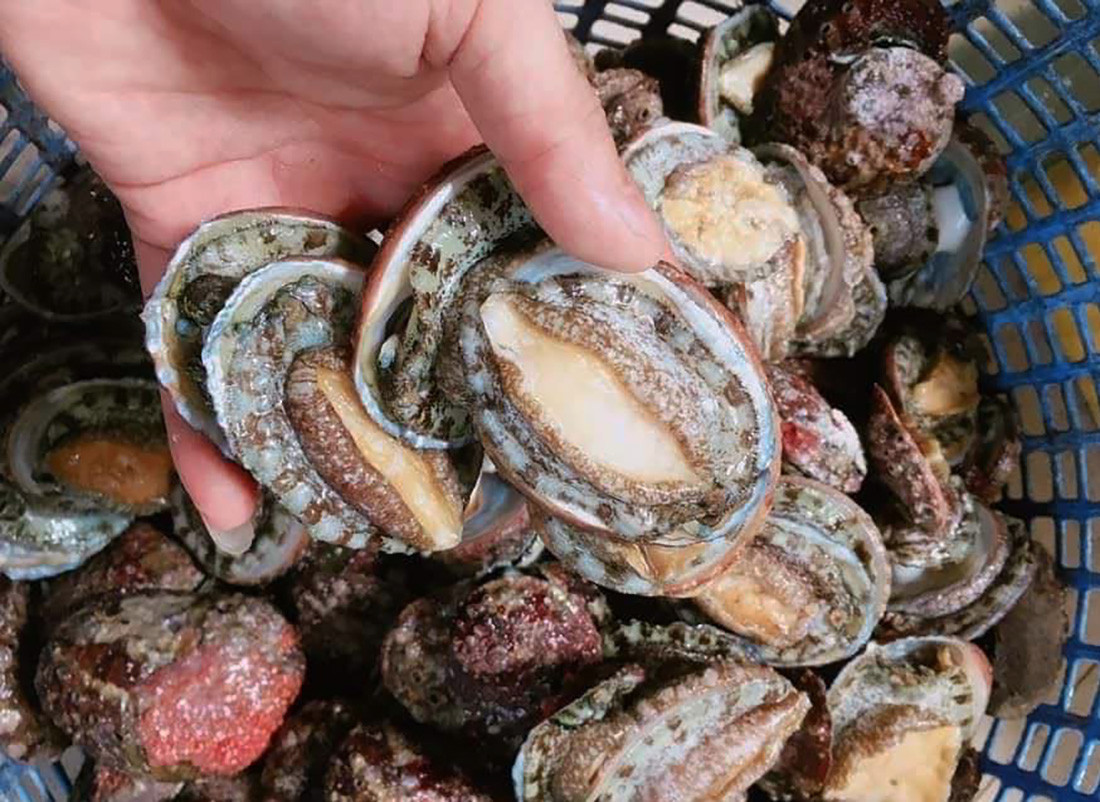
Unlike previous Lunar New Year markets, where rare and expensive products were in high demand, 2024 saw a surge in affordable luxury seafood and Chinese exotic species flooding Vietnamese markets.
Exotic Chinese species invade Vietnamese markets
In June, Chinese crayfish appeared in large quantities across online seafood markets in Vietnam. Vendors boasted about the crayfish’s freshness, claiming they could survive up to a week in water tanks or even a full day on dry land without water.
Although the crayfish is small, comparable to whiteleg shrimp in Vietnam, it was marketed as having firm, sweet meat and an appealing red color when cooked. Popular preparation methods included garlic butter sauce, tamarind sauce, and spicy stir-frying.
Despite being prohibited for sale in Vietnam due to its invasive nature and potential threat to agriculture, the crayfish was sold openly at prices ranging from 360,000 to 400,000 VND ($15-$17) per kilogram.
The General Department of Vietnam Customs intervened shortly after, instructing local customs offices to tighten controls on the illegal import of Chinese crayfish.

Luxury seafood at bargain prices
Beyond exotic species, 2024 was also marked by the availability of premium seafood at surprisingly low prices.
In March, Australian lobster tails, typically considered high-end seafood with whole live lobsters priced at 1.7-2 million VND ($70-$85) per kilogram, were sold at just 340,000-350,000 VND ($14-$15) per kilogram for the frozen tails. These deals resurfaced in September across online marketplaces.
However, the quality of such bargain-priced lobster tails was inconsistent. Trương Văn Sang, a seafood vendor in Hanoi, noted that while the low prices were tempting, the taste and freshness of these products often fell short of expectations.
Similarly, spiny lobsters - often considered a delicacy for the wealthy - were sold at 350,000-480,000 VND ($14-$20) per kilogram in mid-2024, far below their usual market price. Many of these lobsters were farmed in high-density environments and succumbed to oxygen shortages due to heat, leading farmers to freeze and sell them at discounted rates.
Other ‘noble’ seafood becomes accessible
Toward the latter half of 2024, abalone, a seafood delicacy once associated with luxury dining, became widely available at astonishingly low prices.
Live abalone, particularly smaller varieties, was sold for just 10,000-15,000 VND ($0.40-$0.60) per piece on online seafood markets. This equated to approximately 250,000 VND ($10) per kilogram - cheaper than common vegetables like morning glory.
Hairy crabs, a traditional delicacy in China often priced at several hundred thousand VND per crab, were also sold in Vietnam at 50,000-70,000 VND ($2-$3) each for medium-sized crabs weighing 100-140 grams.

Why the unexpected affordability?
Seafood traders attributed the low prices to several factors. Overproduction in farming regions, high supply, and off-season catches contributed to the price drops. Additionally, the expansion of aquaculture for species like abalone and hairy crabs led to increased availability and diversified pricing tiers.
Previously, abalone relied on limited natural harvesting, making it rare and expensive. Now, widespread aquaculture has made it accessible to a broader range of consumers.
Despite the influx of affordable options in 2024, the Lunar New Year shopping season saw a return to higher prices for premium seafood. Australian lobster tails were once again sold at 2.7-3 million VND ($112-$125) per kilogram, while abalone from South Korea and Australia ranged from 900,000 to 3.5 million VND ($37-$145) per kilogram, depending on the variety.
Tam An